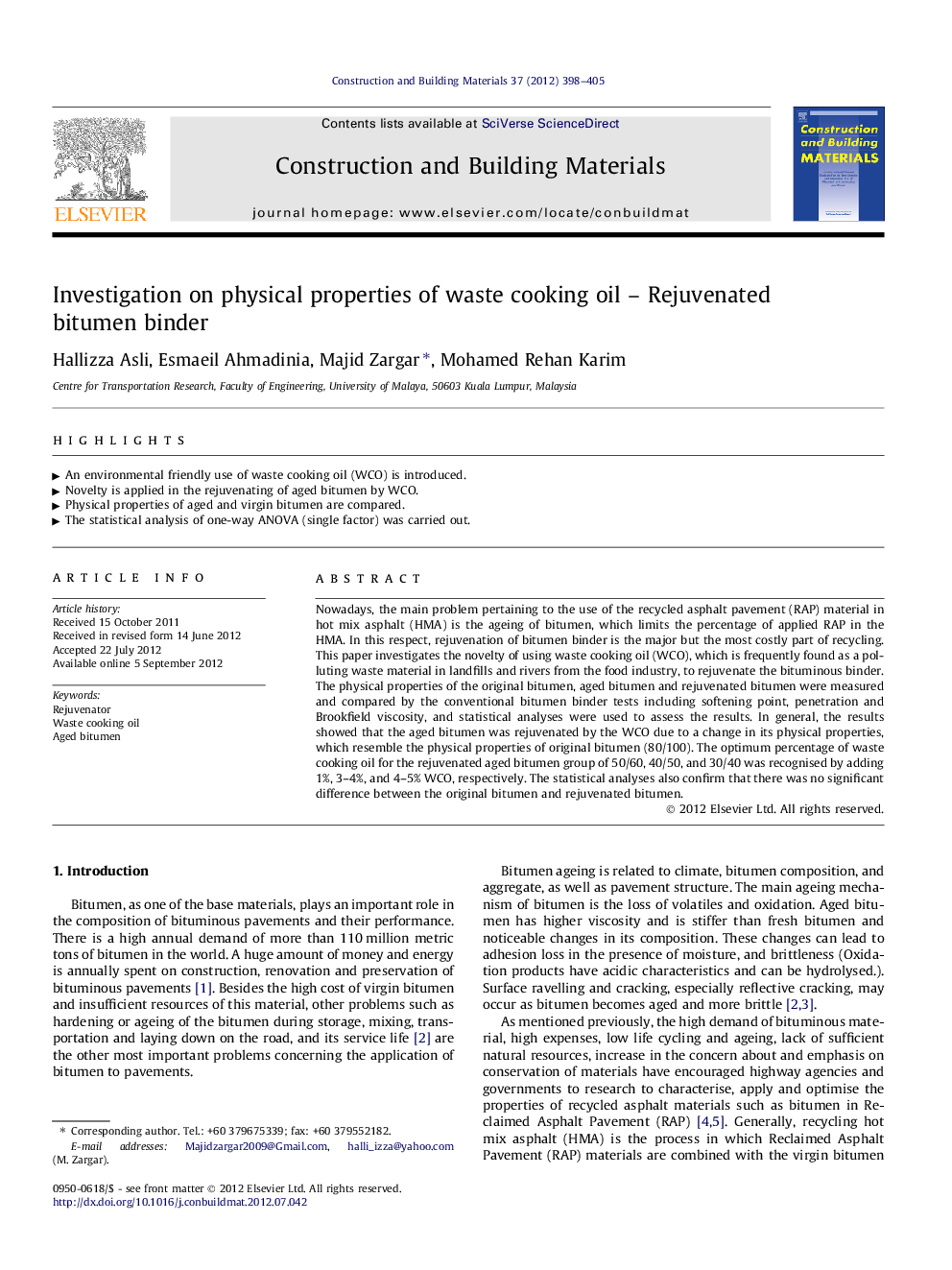| Article ID | Journal | Published Year | Pages | File Type |
|---|---|---|---|---|
| 258735 | Construction and Building Materials | 2012 | 8 Pages |
Nowadays, the main problem pertaining to the use of the recycled asphalt pavement (RAP) material in hot mix asphalt (HMA) is the ageing of bitumen, which limits the percentage of applied RAP in the HMA. In this respect, rejuvenation of bitumen binder is the major but the most costly part of recycling. This paper investigates the novelty of using waste cooking oil (WCO), which is frequently found as a polluting waste material in landfills and rivers from the food industry, to rejuvenate the bituminous binder. The physical properties of the original bitumen, aged bitumen and rejuvenated bitumen were measured and compared by the conventional bitumen binder tests including softening point, penetration and Brookfield viscosity, and statistical analyses were used to assess the results. In general, the results showed that the aged bitumen was rejuvenated by the WCO due to a change in its physical properties, which resemble the physical properties of original bitumen (80/100). The optimum percentage of waste cooking oil for the rejuvenated aged bitumen group of 50/60, 40/50, and 30/40 was recognised by adding 1%, 3–4%, and 4–5% WCO, respectively. The statistical analyses also confirm that there was no significant difference between the original bitumen and rejuvenated bitumen.
► An environmental friendly use of waste cooking oil (WCO) is introduced. ► Novelty is applied in the rejuvenating of aged bitumen by WCO. ► Physical properties of aged and virgin bitumen are compared. ► The statistical analysis of one-way ANOVA (single factor) was carried out.
